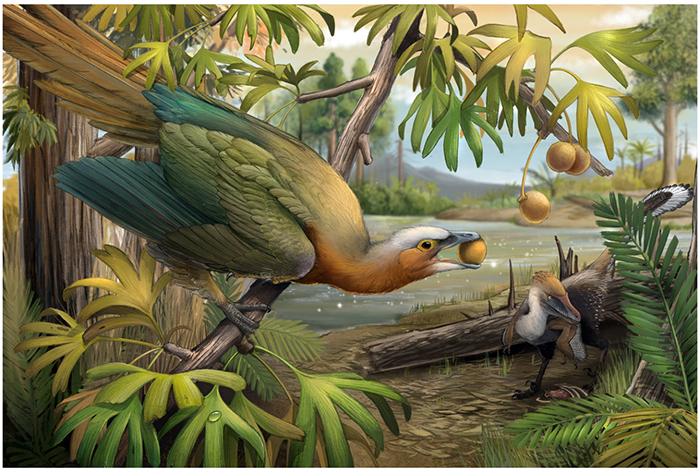
In the Cretaceous mass extinction 65 million years ago, evergreen plants started to decline and died out in the darkness due to asteroid collision and extensive volcanic activities.
This great catastrophic event further led to the extinction of plant-eating dinosaurs, and eventually became a complete disaster for all non-avian dinosaurs. The only dinosaur lineage that survived this extinction event was the ancestors of all extant birds.
Why only one lineage of dinosaurs survived from the extinction has been a mystery for a long time. A research team led by Associate Professor LI Zhiheng from the Institute of Vertebrate Paleontology and Paleoanthropology (IVPP) of the Chinese Academy of Sciences and his collaborators found that dietary differences between bird and non-avian dinosaur might help to unveil the mystery.
The study was published in BMC Evolutionary Biology on Apr. 21.
The researchers explored the detail tooth microstructure within early Cretaceous birds and made a further close comparison with their closest dinosaur relatives, like Microraptor and Anchiornis.

Fig. 1 Ecological reconstruction of a seed-eating bird (left) shared the same wood forest with a non-avian theropod dinosaur (right). The scenario shows early birds evolved different dietary preferences (herbivorous or omnivorous) than those of predators and avoided direct competition. (Image by IVPP)
In the previous study, the researchers found that there was a particular dentin layer (called porous mantle dentin) directly beneath enamel in carnivorous dinosaurs through the application of Transmission X-ray Microscopy (TXM) on fossil teeth. This particular dentine served as a key role in reducing the great shock from biting, and prevented the breakage of tooth in dinosaurs.
In the current study, the researchers compared microscopic tooth structure of non-avian dinosaurs, including Troodon, Anchiornis, and Microraptor, with Cretaceous toothed bird representatives, like Sapeornis and Jeholornis.

Fig. 2 Photograph of the Early Cretaceous Sapeornis, housed in IVPP collection; the black arrow indicates its teeth. (Image by IVPP)
The results showed that even though all the sampled Mesozoic bird teeth retained the simplified enamel, the porous mantle dentine layer between the enamel and the true dentin were all lost. Surprisingly, one tooth from a new Microraptor fossil also lost this layer as well.
The team proposed that feeding strategies for Mesozoic toothed birds were remarkably contrasted with that of their competitors, the predatory dinosaurs. The tooth of fossil birds were no longer used for biting or tearing, and no longer needed that extra dentine layer providing special mechanical protection.
The results provided indirect evidence supporting that birds and a few theropod dinosaurs shifted their dietary preferences. They avoided direct ecological competition for food resources with carnivorous dinosaurs.
Compared to the prevailing trend (i.e. becoming herbivorous, insectivorous, and omnivorous) that these early birds had, only a few other dinosaurs have convergently evolved the same habit that the new Microraptor showed.

86-10-68597521 (day)
86-10-68597289 (night)

86-10-68511095 (day)
86-10-68512458 (night)

cas_en@cas.cn

52 Sanlihe Rd., Xicheng District,
Beijing, China (100864)

